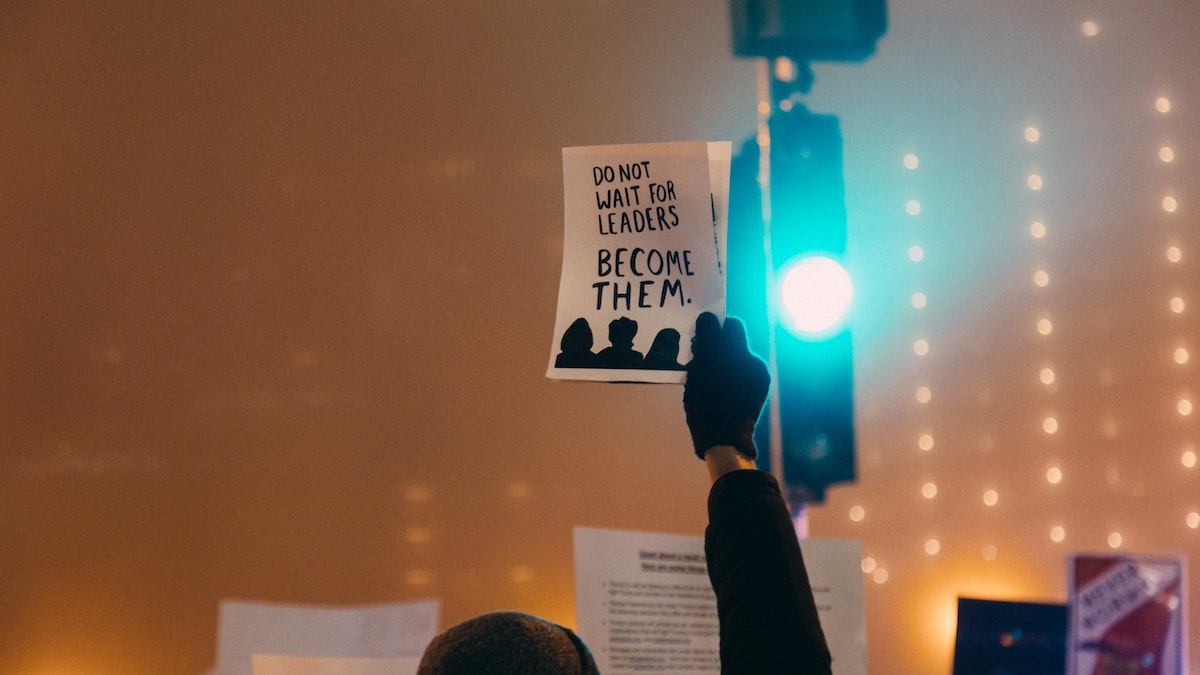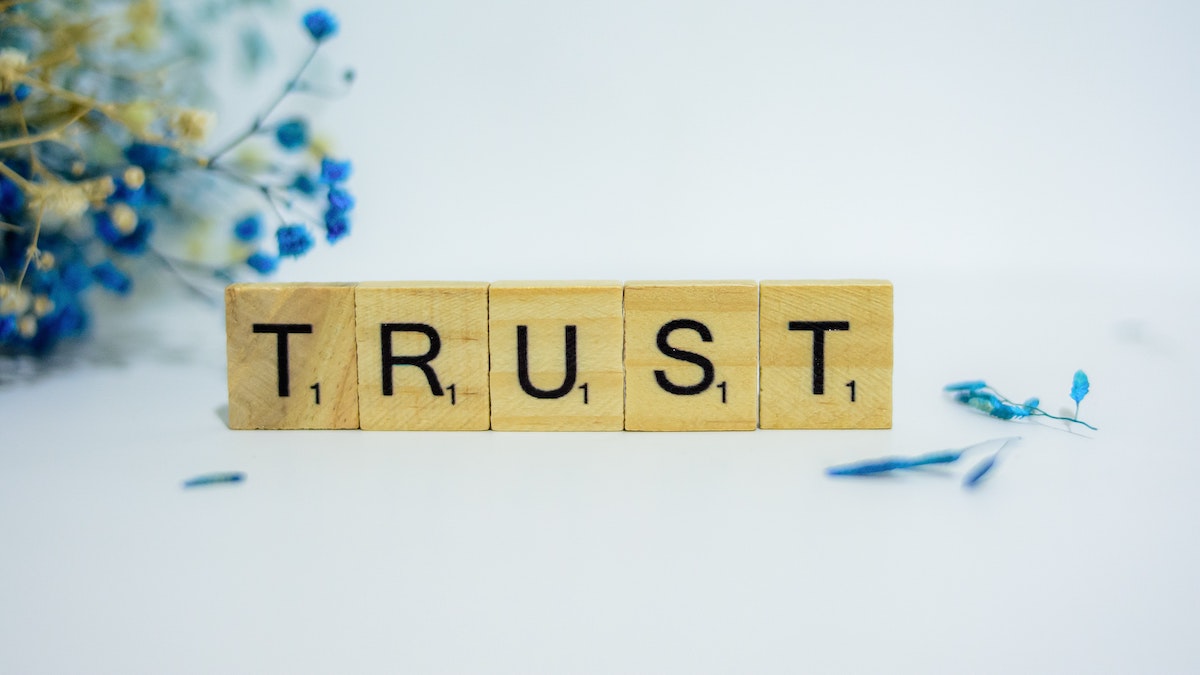This guide has been superceded by the Develop the Be Helpful Keystone Habit and Transform Your Problem Solving Skills article, part of the Problem Solver Series.
Leadership is full of nuances with different approaches based on industries, cultures, and personality styles. Across this diversity are a handful of skills and behaviours that are universal to exceptional leaders: being personable, professional, organized, and most important of all, being someone who follows through on their promises
This guide shares why developing a keystone habit such as being helpful gives you the practical tools to improve your leadership skills today, to consistently be you organization’s exceptional leader day after day, and achieve the outstanding results others can’t.
Table of Contents
- [Part 1] Create The List of Leadership Skills You Want to Improve, and Learn About the Power of Keystone Habits
- Which Leadership Skills Would You Like to Improve?
- What Results Can You Expect When You Develop Your Leadership Skills?
- Goals Often Fail Because of a Poor System
- Keystone Habits: The Secret Sauce That Makes Your Improvement System Work
- Example of a Keystone Habit: Making Good Decisions
- The Power of a Keystone Habit Goes Beyond Personal Growth
- Recap: Improve Your Leadership Skills
- [Part 2] The Be Helpful Keystone Habit – the Effective System to Improve Your Leadership Skills
- The Most Powerful Keystone Habit Is to “Be Helpful”
- Why Being Helpful is Such a Powerful Keystone Habit
- Outcomes of the Be Helpful Keystone Habit
- When You Improve Your Leadership Skills You Are Able to Solve Critical Problems
- Keystone Habit vs Mindset: Are They The Same?
- Build and Use a System That Works
- Take the First Step By Asking These Two Problem Solving Questions
- How Can I Encourage…? and What Barriers Do I Need to Remove? Examples
- Recap: Improve Your Leadership Skills
- [Part 3 ] A Practical Example of the Power of the Be Helpful Keystone Habit
- #1: Define the Critical Problems
- #2: Build Relationships
- #3: Simplify Processes, Understand Client Needs, and Provide Better Project Management to Deliver Them
- #4: Successful Project Delivery
- Three Behaviours That Made Me Helpful and the Project a Success
- Positive Impacts the Be Helpful Keystone Habit Had on the Wider Organization
- The 3 Most Important Lessons I Learnt
[Part 1] Create The List of Leadership Skills You Want to Improve, and Learn About the Power of Keystone Habits
Which Leadership Skills Would You Like to Improve?

The first place to start when improving your leadership skills is to embrace the impetus for the change. Is it because you want to stand out from your peers? You want to move to a new job or get that promotion?
Understanding why you want to change, helps you determine which behaviours you want to change. For example:
- Learn new skills through professional development?
- Strengthen your team’s culture?
- Do more with fewer resources?
- Grow your organization through the current challenges?
- Stand out from your peers and achieve that promotion?
- Encourage greater collaboration across your organization?
- Maintain a work life balance among the craziness the world currently has to offer?
What goals would you add or remove from the list? Are there any pointers from your last performance review you can work on and strengthen?
Take a few minutes to write down your leadership goals and the behaviours you want to change.
My favourite trick to help with self awareness is to look at the people I admire and those that, well, not so much.
I ask myself, what traits do I share with each person? Now, what do I need to do more of and what do I need to do less of, or stop completely?
What Results Can You Expect When You Develop Your Leadership Skills?
The benefits you can achieve are as broad and diverse as the goals that inspire them.
When you improve your leadership skills you can expect to increase results, grow trust, and build relationships. At the same time you reduce overruns, remove waste, and resolve frustrations. The end result is a burgeoning personal reputation because you are able to deliver and are the go-to person who makes a difference.
Below are some of the benefits for myself, and those around me, as I have become a better leader:
- Customers trust me and want to work with me again and again.
- My team listens to my advice and leadership.
- I influence decisions, resulting in better outcomes.
- I deliver the outstanding results others can’t.
What results and advantages will you create when you achieve your goals? Write them down.
Goals Often Fail Because of a Poor System
In his book Atomic Habits, James Clear highlights the reason most people don’t reach the goals they’re aiming for. They don’t have a system in place to help them get there.
Imagine we are surveying a new route and part of the journey takes us through a forest and over an existing road. Surveyors, project managers, and the client have created and signed off on a plan. The plan documents the sections of the route and any obstacles the construction team will face and how to solve them.
But if we don’t have the right system we run the risk of working on the wrong items at the wrong time, and starting in the wrong place.
Which leaves us with the potential for a bridge in the middle of nowhere that doesn’t connect to anything or take us anywhere.

Keystone Habits: The Secret Sauce That Makes Your Improvement System Work
Continuing with James Clear for a moment, he mentions two ways to turn your goals into repeatable habits and successful outcomes:
- Make the habits easy to do
- Make small changes consistently
Complimenting the idea of small changes, Charles Duhigg, author of The Power of Habit: Why We Do What We Do in Life and Business, defines keystone habits as:
…small changes or habits that people introduce into their routines that unintentionally carry over into other aspects of their lives…
Because small changes are easier to do and maintain than seismic ones, this is where developing a keystone habit makes the difference.

Example of a Keystone Habit: Making Good Decisions
We make thousands of decisions everyday, 35,000 according to some internet sources. Some good, some bad.

Looking both ways before crossing the street, leaving five minutes earlier than normal for that important meeting, choosing to go for a swim even though there may be sharks in the water.
Let’s say “making good decisions” is one of our keystone habits. What other behaviours of ours are affected?
To make a good decision it helps to be informed, balanced in our emotional state, and prepared for what happens next.
To become informed we start with an open mind and get a full range of opinions by talking with people who are both for and against the decision.
We take the time to research the options and our documentation is clear, making it easy to understand the pros and cons of each option.
Being thoughtful of our actions and their impacts to those around us is an important part to creating a sense of balance.
When we pause and think about our actions we’re more likely to make a good decision. If we decide in haste or in a heightened state, we increase our chances of ignoring vital information or downplaying risk, leading to bad decisions.
The third element in our list of behaviours for good decisions is to execute on our plan once we’ve made our choice. We need to know what to do so we can take advantage of our informed, good decision.
You can see how with one keystone habit, making good decisions, we’re able to improve leadership skills in all sorts of different areas:
- Self awareness
- Building relationships
- Communications
- Critical thinking
- Documentation
- Planning
By making small changes in multiple places to build a single habit, the result is a cumulative effect spanning the broader range of our skills and goals. The whole is greater than the sum of its parts.
The Power of a Keystone Habit Goes Beyond Personal Growth
Keystone habits work for personal development, but are they as effective for strategic and organizational goals? The short answer is yes.
Charles Duhigg provides an excellent example of the power of a keystone habit. The international company Alcoa improved its corporate culture, communications systems, performance, quality, and profitability by focusing on one keystone habit: safety in the workplace.
A keystone habit is one that positively impacts everything else you do.
Charles Duhigg
Think about a pond with a calm surface. What happens when you skip a stone across its surface? How far do the ripples spread? How many intersect and impact each other?

Now imagine yourself as someone who is helpful, trustworthy, gets things done, is a pleasure to work with. You are someone who makes a real difference to those around them.
How far can your influence spread? How many people can you impact and change for the better? What can your organization achieve when you do this?
Recap: Improve Your Leadership Skills
So far, you have created the list of leadership skills you want to improve and the resulting advantages you expect to gain. You have also learnt how developing a keystone habit gives you the mechanism to grow and improve.
Now, let’s build your winning system with two simple steps:
- Identify the one keystone habit that makes the difference.
- Utilize two problem solving questions to develop the behaviours that become the keystone habit.
[Part 2] The Be Helpful Keystone Habit – the Effective System to Improve Your Leadership Skills
The Most Powerful Keystone Habit Is to “Be Helpful”
A few years ago I saw first hand how a well run hospital emergency room can save someone’s life. Of all the incredible things I saw that day, the senior nurse’s actions left the greatest impression.
The other nurses turned to him with their questions, the doctor asked him for updates, and we listened to him when he explained what was happening and what they were planning to do next.
But he wasn’t just the patient/hospital liaison, he also had his own list of responsibilities and medical duties to carry out.
It was clear that the senior nurse was the go-to person in the room and a critical part of the success of the treatment. In short, he was helpful.
Like the senior nurse in the emergency room as a project manager, team leader, executive, or subject matter expert all eyes are on you to deliver.
The expectation is you know what you are doing, you understand the specific type of help people need, and how to provide it.
People see you as helpful when your actions enable them to achieve what they need to do. And when others succeed, you succeed.
Why Being Helpful is Such a Powerful Keystone Habit
There are lots of good habits that improve specific areas of our lives and boost our leadership qualities. If you were to write them all down, that would be quite the list. Attempting them all would not only be daunting, but how many of them would fall off the list or be forgotten?
If we look at the high level outcome from this long list of good habits, all paths lead back to being helpful. Much like a major junction in a road system.

Even our keystone habit of making good decisions needs other good behaviours to compliment it before we can be seen as helpful.
For example, someone who wants to make good decisions but does not encourage engagement with their team or provide effective updates to their manager is not seen as helpful or effective.
Quite the opposite.
Although they are aiming to be proficient in one area, their deficiencies elsewhere prevent them from being seen as helpful for delivering the overall results.
Be Helpful as a keystone habit works because you focus on one goal that affects everything else you do.
Being helpful means you are someone others want to work with because you understand their problems, deliver the right solutions when you promised, and care about the outcomes and people involved.
What does being helpful mean to you? What behaviours are improved when you work to understand the problems you need to solve? When you deliver the right solution when you said you would? When you follow through on your promises?
Outcomes of the Be Helpful Keystone Habit
Each day you strengthen your Be Helpful keystone habit you are encouraging people to work with you and use your products and services time and again.
You are able to do so because your behaviours enable you to understand the things your clients, end users, and teams need to be successful.
With this knowledge you can build a complete and accurate picture that helps you provide the right solution to their needs.
No matter your solution – software, services, or strategy – people engage with it because the right solution is easy to understand and use, fulfills a need, and grabs their attention.
Examples of solutions you can deliver with the be Helpful keystone habit
- Achievable project plans
- Clear work assignments
- Efficient policies and procedures
- Effective portfolio management
- Trustable status updates
- Informative presentations
- Strategic relationship building
- Foster a positive culture
For example, to create an achievable project plan requires clear communication skills – written and verbal – the ability to ask the right questions, to listen to feedback, to generate consensus, and provide presentations that are easy to understand.
These behaviours are all part of the Be Helpful keystone habit. You are seen as helpful because you work easily with others to create the achievable project plan.
You build trust and consensus as you go because the plan accurately fulfills the needs of the project and is easy to follow and understand.
By making small adjustments to all of these areas the cumulative effect is you can solve the problems that others can’t.
When You Improve Your Leadership Skills You Are Able to Solve Critical Problems
Projects and teams are beset by a myriad of problems, the most common of which are people based. And when left unresolved they turn into major issues.
When you improve your leadership skills with the Be Helpful keystone habit you begin to solve these critical problems:
Project waste and burden
- Nearly 10% of a project’s budget is wasted.
- Only 46% of projects are mostly or always completed on budget.
Unfulfilled promises
- Almost two thirds of projects, 64%, don’t deliver their full benefits..
Disengaged employees
- Just over half of workers, 53%, are not cognitively and emotionally connected to their work and workplace.
Statistics come from PMI, Wellingtone, and Gallup surveys. For more information behind the numbers, head over to my article Lies, Damned Lies, and Statistics.

Keystone Habit vs Mindset: Are They The Same?
Yes! Two sides of the same coin, six of one and half a dozen of another, tomato, tomahto.
A keystone habit and a mindset both require you to think and act in deliberate ways. You set yourself a goal and your chosen actions achieve the result you desire.
For example, one skill of having a Be Helpful mindset means you create achievable project plans that others find helpful.
To create that plan you work to build trusting relationships, you are organized, your communications are clear, you listen to feedback, and follow through on promises made.
It’s the same approach as the Be Helpful keystone habit.
Build and Use a System That Works
Every system has at least three elements to it:
- Inputs
- Processes
- Outputs
The system I use to continue my own improvements is no different.
Inputs
- Build the list of leadership skills you want to improve and their expected results.
Processes
- Identify the specific behaviours you need to improve and achieve the results you want by asking two effective problem solving questions:
- How can I encourage people to…[insert desired behaviour]?
- What barriers do I need to remove for this happen?
- Follow through by developing the behaviours that fulfill the answers to the problem solving questions.
Outputs
Your specific goals are enhanced by these strategic and personal outcomes of the Be Helpful keystone habit.
Strategic outcomes:
- You understand what your clients, end users, and teams need to be successful. With that complete and accurate picture you provide the right solution.
- You keep people coming back for more and engaged by ensuring the right solution is easy to understand and use, fulfills a need, and grabs their attention.
Personal Outcome
- You become your organization’s unicorn employee.
Take the First Step By Asking These Two Problem Solving Questions
Ask yourself the following questions:
- How can I encourage people to…[insert desired behaviour]?”
- What barriers do I need to remove for this happen?
These easy to remember questions give you the answers to help you decide how to move forward with your goal. Whether that’s to improve a specific leadership skill, create an achievable project plan, or generate excitement for your change initiative.
With each answer you can ask the question again, in an iterative fashion, to get more details and easily understand the solution you need to provide.
Taking action on the answers to these questions leads to the behaviours that create the Be Helpful keystone habit.

It’s the same idea as the “5 Whys Technique ” to quickly get to the root cause of a problem.
How Can I Encourage…? and What Barriers Do I Need to Remove? Examples
How can I encourage people to trust my project plan?
- Provide an accurate and prioritized feature list with easy to understand user stories and an achievable time frame.
What barriers do I need to remove for this to happen?
- Simplify the data collection and project plan creation process.
How can I encourage people to give me a feature list with accurate priorities?
- Make it easy for stakeholders to provide their needs and collaborate with the sponsor, stakeholders, and project team around technical and business priorities.
What barriers do I need to remove for this to happen?
- Resolve the mistrust between stakeholders, technical team, and project manager.
Recap: Improve Your Leadership Skills
The two simple steps that make up the winning system:
- Develop the Be Helpful keystone habit.
- Being helpful means you are someone others want to work with because you understand their problems, deliver the right solutions when you promised, and care about the outcomes and people involved.
- Define the specific behaviours you need to improve by asking these problem solving questions:
- How can I encourage people to…[insert desired behaviour]?
- What barriers do I need to remove for this happen?
You are seen as helpful because:
You understand what your clients, end users, and teams need to be successful. With that complete and accurate picture you provide the right solution.
You keep people coming back for more and engaged by ensuring the right solution is easy to understand and use, fulfills a need, and grabs their attention.
By making small adjustments in all areas such as relationship building, communications, organization, etc the cumulative effect is an overall improvement to your three core leadership skills – emotional, functional, and technical.
[Part 3 ] A Practical Example of the Power of the Be Helpful Keystone Habit
How I Used the Be Helpful Keystone Habit to Fix a Failing, $1M Software Project
An organization I worked for was struggling to complete a high-risk, enterprise wide software project. The team of in-house programmers were fighting scope creep, missed deadlines, and inconsistent quality. Price quotes from software vendors to provide the solution came in at over one million US dollars.
One key stakeholder described the project as a train wreck.
After careful review the organization decided to continue with the project in-house and I was given a sole directive: change the approach and make the project successful.
Here is how I used the Be Helpful keystone habit and the encourage/barrier problem solving questions to save the project and improve my leadership skills.
Being helpful means you are someone others want to work with because you understand their problems, deliver the right solutions when you promised, and care about the outcomes and people involved.
#1: Define the Critical Problems
Below is a list of the key problems the team were dealing with:
- A feature list that kept growing.
- Existing code that was never finished or was rewritten.
- All desired functionality was considered “important”.
- Prioritization and governance followed the he who shouts loudest and longest model.
- The only communication between the project manager, sponsor, and key stakeholders had been the weekly status meeting.
- The whole team was working hard but there was a sense the project would never end.

#2: Build Relationships
Prosci, a leading change management organization, have found “with extremely effective sponsorship , projects were almost three times more likely to meet or exceed project objectives than projects with very ineffective sponsorship.”
How could I encourage trust in the process and build effective relationships with everyone involved?
The path to my desk from the company car park took me straight past the front office of the sponsor’s department. It was easy for me to visit her first thing in the morning when I knew she would be available and before her calendar was full for the day.
This removed the barrier of never being able to meet due to her calendar. No more “I can’t meet this week, my calendar’s full of back-to-back meetings. How about next week?”
These impromptu sessions suited her no-nonsense style and they quickly became a welcome part of her daily routine. Each demonstration was concise and informative with no fluff or wasting time.
This meant when the sponsor and I sat down for the weekly status meeting with the key stakeholders, there were no surprises. When I needed to discuss problems in the meeting I started with “I’ve talked to the sponsor and this is what we are thinking…”
The partnership was also obvious to the development team who began to trust me to get the accurate answers they needed when they needed them, or even before.
#3: Simplify Processes, Understand Client Needs, and Provide Better Project Management to Deliver Them
The project needed solid documentation and it needed to be easy to access, review, understand, and maintain.
How could I encourage the creation of an accurate requirements list, prevent scope creep, and improve the quality of launched features?
I removed the excessive procedures and made the process of managing the project accessible to all and efficient.
Documents and processes that did not move the project forward were abandoned. The objectives and benefits behind those that remained were clear and easy to understand.
I moved the features from a flat list in a Word document to a visual medium with annotated mockups of the software’s interface. Each mockup noted how the features should function for the user and what they needed to do in the underlying infrastructure.
This highly visual approach acted as an accurate translator between business needs and technical specifications.
Both the project team and key stakeholders could use and understand the same document.
We saw how all the parts connected, which features were straightforward to program, and which would require considerable time and effort.
The result was the correct prioritization of features and user stories.
Another benefit was being able to add new features to the schedule without causing disruption and frustration. When functionality needed to change or be added, its impact on the existing software and workloads was easy to see and to make decisions around.
With the help of the senior programmer I introduced an efficient Agile approach which enabled us to plan and track sprints with clear objectives and achievable workloads. A strict coding process covering version control, testing, and release management drastically improved the quality of launched functionality.

#4: Successful Project Delivery
With the combination of stable specifications and accurate user stories our output increased and the quality went up.
Importantly, we knew when we had crossed the finish line.
We had helpful and accurate documentation because we simplified the processes around gathering and recording the data. This meant our documentation was usable and trustable. The result was on-time delivery of sprints, phases, and the end product.
From train wreck to light at the end of the tunnel.

Three Behaviours That Made Me Helpful and the Project a Success
- As the project manager, thinking and acting differently to the previous approach that had caused the major problems.
- Building trusting relationships and encouraging collaboration with the sponsor, stakeholders, and project team.
- Demonstrating I was critical to the success of the project by following through on promises made, providing accurate answers, and being open to new ideas that would benefit the whole project.
Positive Impacts the Be Helpful Keystone Habit Had on the Wider Organization
My starting point was to encourage people to work with me and follow my leadership.
The behaviors I developed to achieve this resulted in:
- Removal of silos and stronger relations across multiple areas of the organization.
- Improved project planning, documentation, and execution practices that were utilized on other projects.
- Lasting cultural change in the team, going from frustration and stress to pride, satisfaction, and a sense of balance.
The 3 Most Important Lessons I Learnt
Turning around this project from train wreck to success is one of the proudest moments in my long career.
Why? Because I was the project manager when it was failing and I was the project manager when it succeeded.
Here are the three most important lessons I learned:
It is people that make the difference and not always process.
When you think and act differently you reap great rewards.
Seeing things from a different perspective, and following through, leads to phenomenal growth.





